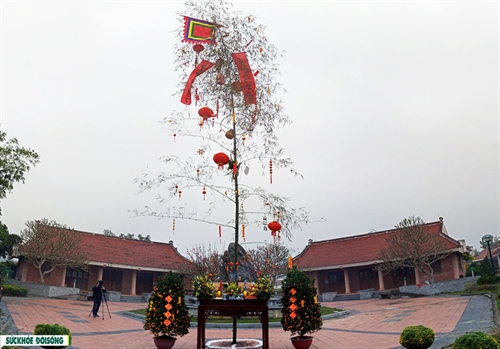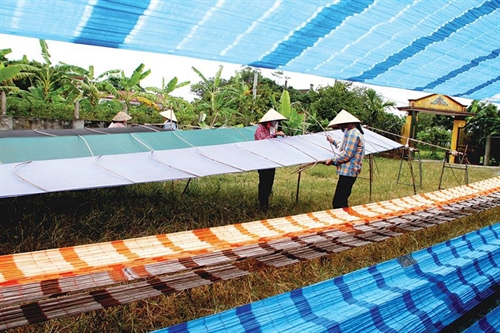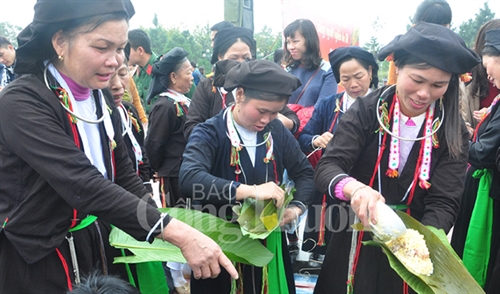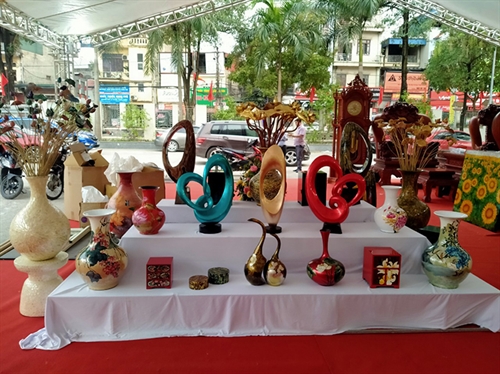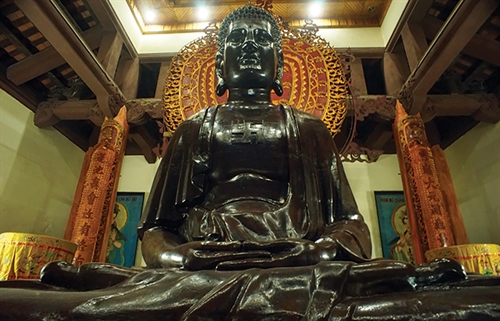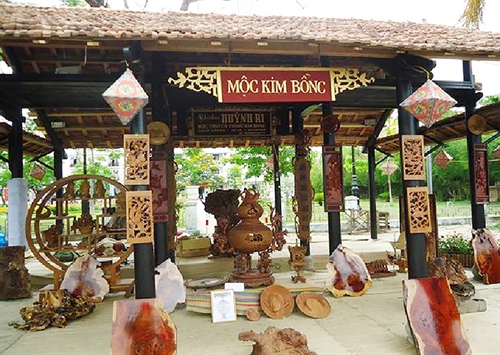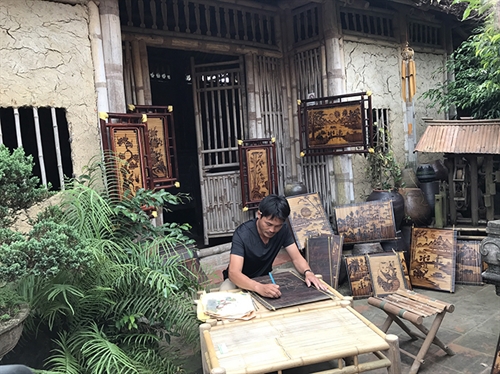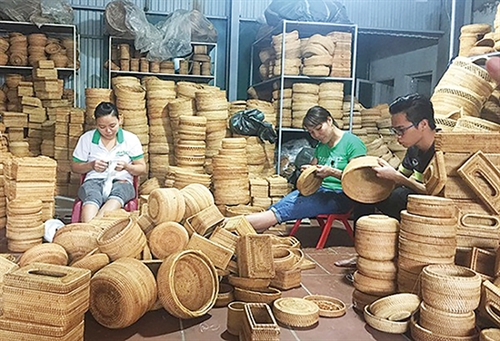Do Thi Nguyet Que
As soon as a visitor enters Nhi Khe traditional woodturning craft village, he will hear the sounds of sawing, sanding, chiseling, and the clattering of the motor-driven lathes echoing from all corners of the village.
Located in Nhi Khe commune of Thuong Tin district, about 20 kilometers south of Hanoi, Nhi Khe woodturning craft village specializes in manual woodturning. The village is well-known for hand-turned wooden objects for use in religious activities and other wooden, horn, bone, stone and clamshell items for decoration and daily use.
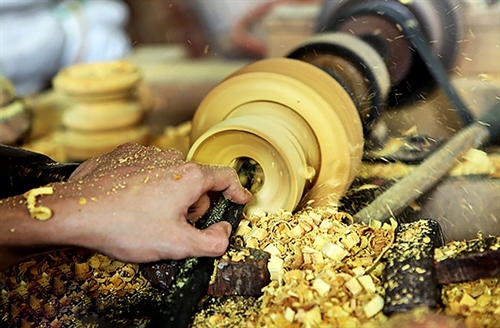 |
| Lathing wood blocks__Photo: https://vietnam.vnanet.vn |
No one knows exactly when the craft village was set up and who its founder was but historical records reveal that it was an unknown old man who introduced the woodturning craft to local people. It was said that the old man tried to teach woodturning techniques to inhabitants of Khanh Van, Hoang Xa, Do Ha and Nhi Khe villages but only Nhi Khe villagers could master the craft. Since then, Nhi Khe village was also called Dui Tien (“Dui” is the casual name of the village and “Tien” means woodturning). After villagers become proficient in all necessary skills, the old man suddenly left the village without a trace. To show their gratitude and respect to the founder of the craft, Nhi Khe villagers built a small shrine to worship him and chose the day he left the village, the 25th of the 10th lunar month, as the day to pay tribute to their craft village’s founder. In 1928, a worship house was built in the village with contributions of all Nhi Khe villagers. In the past, offerings at a memorial ceremony included a freshly slaughtered pig and a singed cow which are nowadays replaced with a pig head, sticky rice, a rooster, and some flowers.
According to the village’s customs, on the first day of the Lunar New Year festival, Nhi Khe villagers set off to their village communal house to pray for a peaceful and prosperous new year and then visit the craft founder’s worship house to pay their respect to him.
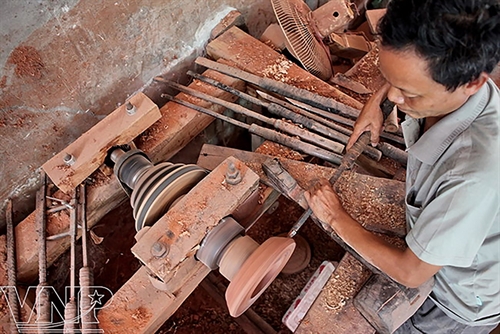 |
| Artisan Dinh Song Hung__Photo: https://vietnam.vnanet.vn |
Hundreds of years ago, the first generation of Nhi Khe skilled craftsmen flocked to other localities in the country with the most important luggage being simple woodturning instruments such as saws, chisels, knives, and lathe beds. In the imperial citadel of Thang Long (now Hanoi’s ancient quarter), they opened stores in the area which is now To Tich street to sell hand-turned wooden items, including pestles, mortars, spoons, carved seals and spinning tools.
In the past, Nhi Khe villagers focused on producing religious objects made from rosewood, dalbergia tonkinensis and meliaceae timber for religious use. The hand-turned items included candle sticks, vases, fruit trays, fruit bowls, lamp stands, incense burners, miniature statues, and tocsins of different shapes (a wooden instrument used in Buddhist rituals, belief ceremonies, water puppet shows and traditional musical performances). They also produced household utensils such as spindles, bobbins, knobs and dish-cover lids.
Nowadays, Nhi Khe craftsmen have managed to diversify their products. Apart from traditional objects, the list of the craft village’s products now includes jewelry items made from wood, buffalo horn and bone, clamshell and stone, wooden chessmen, wooden-bead mats and curtains, chopsticks, toothpick containers, and hangers which serve not only domestic demands but also export markets. In addition, Nhi Khe village’s products, such as trays, candle holders, vases and teapots, are also used by lacquer makers in the neighboring village of Ha Thai in Duyen Thai commune to produce lacquer-coated items of high economic value.
 |
| Products of Nhi Khe woodturning village__Photo: https://vietnam.vnanet.vn |
To speed up the manufacturing process, today, traditional foot-powered woodturning machines have been replaced with motor machines. However, the woodturning craft still requires not only meticulousness but also skill and patience as the turning of a wood piece or block into a cute miniature statue, teacup, teapot or tocsin must go through various steps. The craftsman first of all lathes a wood block until it has the desired shape. He then uses a special woodturning gouge to hollow out the block and a skew chisel to carve decorative motifs such as dragon, frog and fish. Particularly, if wishing to produce a tocsin, the craftsman has to cut small slots along the tocsin that will help the tocsin produce sound. For teacups or teapots, the woodturner will lathe the lid or handle separately and then assemble it with the cup or pot. Meanwhile, making miniature statues requires craftsmen to possess a keen aesthetic eye and taste.-
